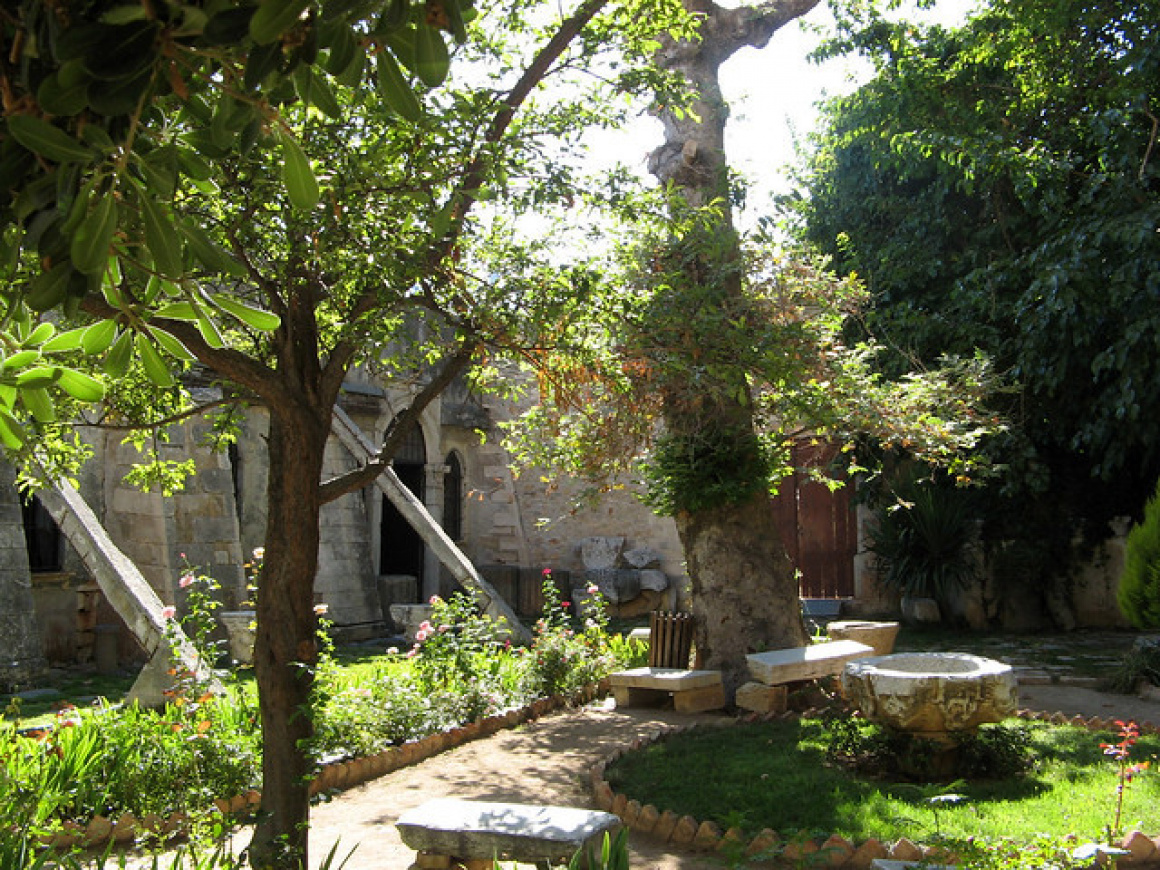Chania's old town, with its narrow lanes and Venetian mansions, holds yet another historical treasure: the Chania Archaeological Museum. Recently relocated to a spacious new facility in the Halepa district (as of 2022), this museum showcases the rich antiquities of western Crete – particularly the Chania region (ancient Kydonia) and nearby sites like Aptera, Polyrrhenia, Phalasarna, and others. The move from its former cramped Venetian church home to a modern building has allowed more artefacts to be displayed, making now a perfect time to visit. The museum's collections cover the span from Neolithic to Roman times, with special emphasis on the Minoan era (when Kydonia was a major centre) and the Hellenistic-Roman era (when cities like Aptera flourished). What sets Chania's museum apart is the way it highlights connections: between Crete and mainland Greece (e.g. imported pottery, stylistic influences) and between Crete and the wider Mediterranean (like Egyptian or Phoenician contacts). The exhibits are thoughtfully arranged, often by site, giving you a micro-history of each location. With its upgraded displays – think well-lit cases, informative multimedia, and even some partial reconstructions – the new Chania Archaeological Museum is an engaging window into the ancient soul of West Crete.
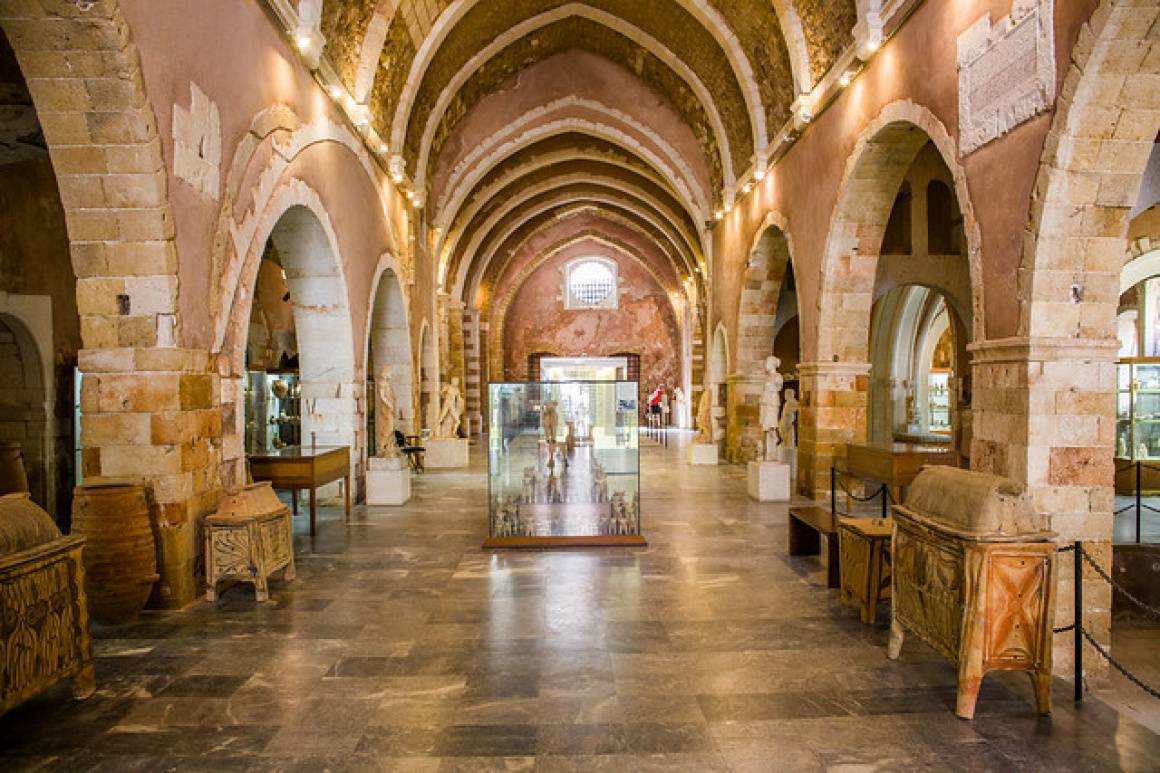
 'Chania' - Attribution: Shadowgate
'Chania' - Attribution: ShadowgateUnearthing Minoan Kydonia and Beyond
Chania sits atop what was ancient Kydonia, a significant Minoan and later Greek city. Excavations in Chania's Kastelli district have uncovered a continuous sequence of settlement from Neolithic through Late Minoan IIIC. The museum naturally dedicates a lot to these finds:
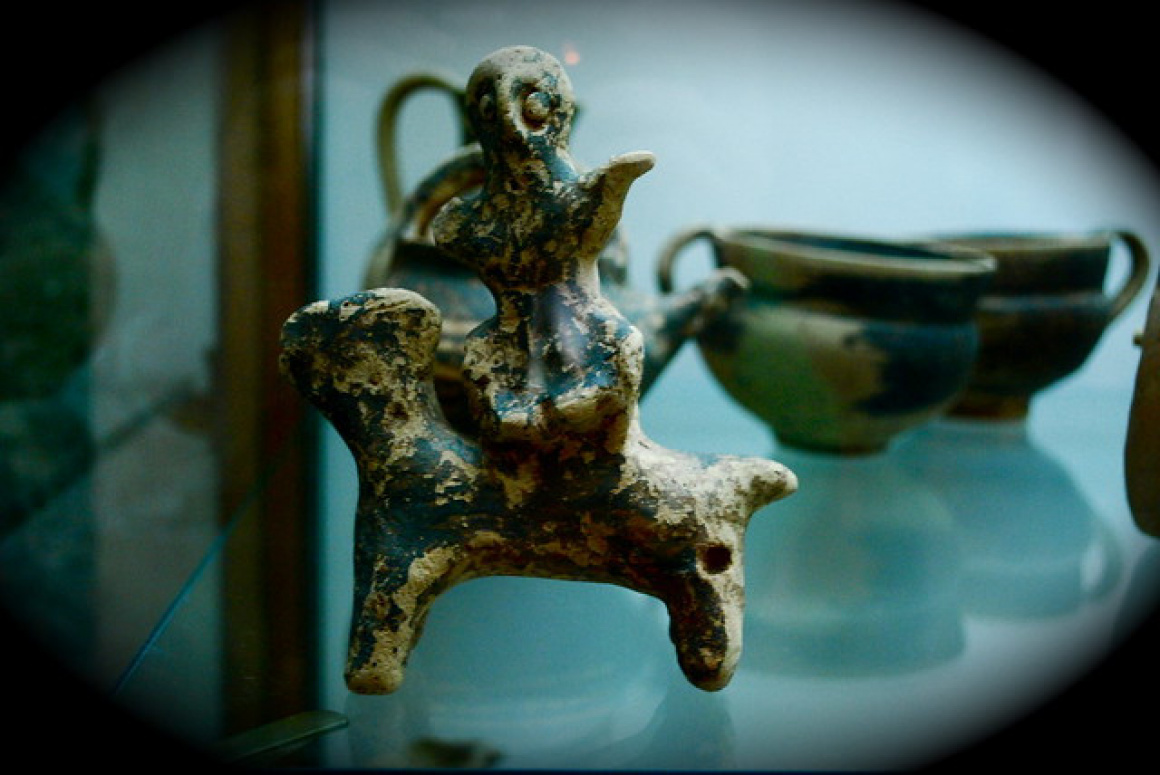
 '2656' - Attribution: Panegyrics of Granovetter
'2656' - Attribution: Panegyrics of GranovetterPrehistoric Chania
Early on, you'll see simple finds – obsidian blades, early ceramics – from caves like Kourna or settlements like the Neolithic layers under Kastelli Hill. These show how the area was inhabited since at least the 4th millennium BC.
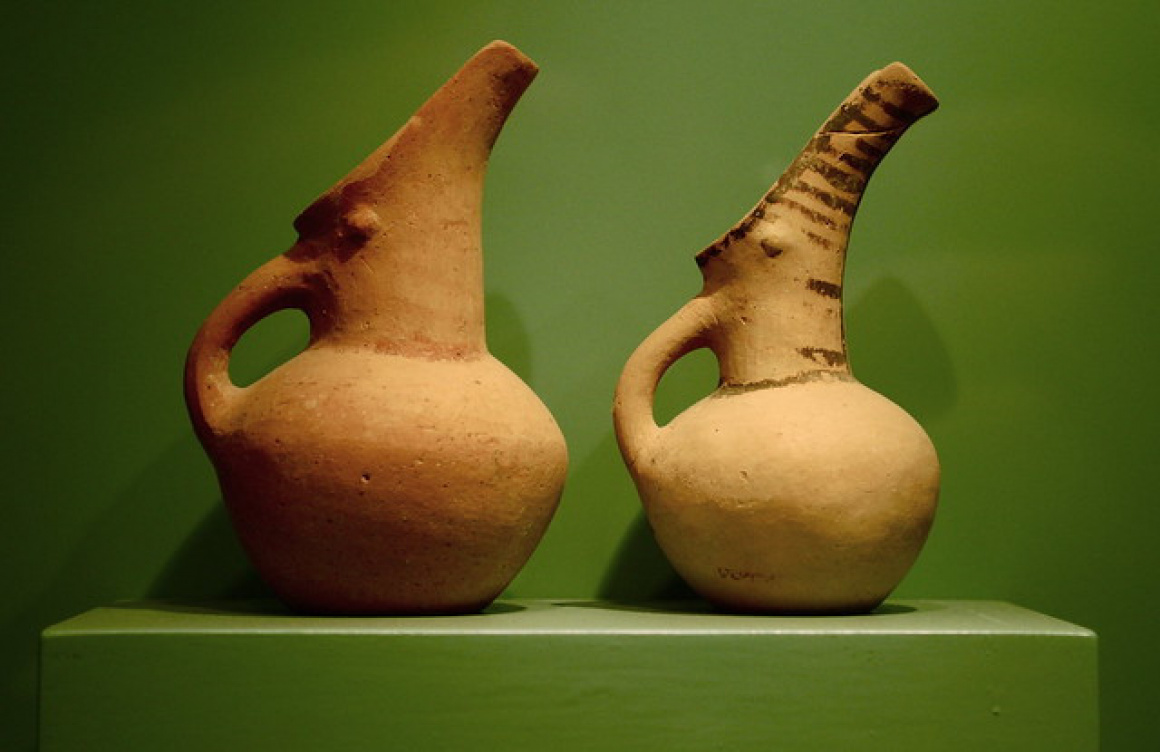
 '2668' - Attribution: Panegyrics of Granovetter
'2668' - Attribution: Panegyrics of GranovetterMinoan (Bronze Age) Treasures
A major section is the Minoan finds from Chania (1700–1200 BC). Notably, around 1450 BC when Knossos influence spread, Kydonia grew into a palatial site itself.
Linear A Tablets and Archives:
One case features clay Linear A tablets and sealings found in Chania – evidence of bureaucratic recording.
Clay Tablets in Linear B:
Interestingly, Chania yielded some Linear B tablets as well, showing Mycenaean Greek used in administration by ~1300 BC. Seeing these little tablets with deciphered lists (for wool, spices, etc.) is thrilling; they are some of the earliest writing in Europe.
Sealstones and Jewellery:
A beautiful array of Minoan sealstones from Chania's tombs or sanctuaries – agate and carnelian gems finely engraved with bulls or goddesses. Also, gold bee and flower pendants reminiscent of the Malia bees indicate that Kydonia likely had its local styles.
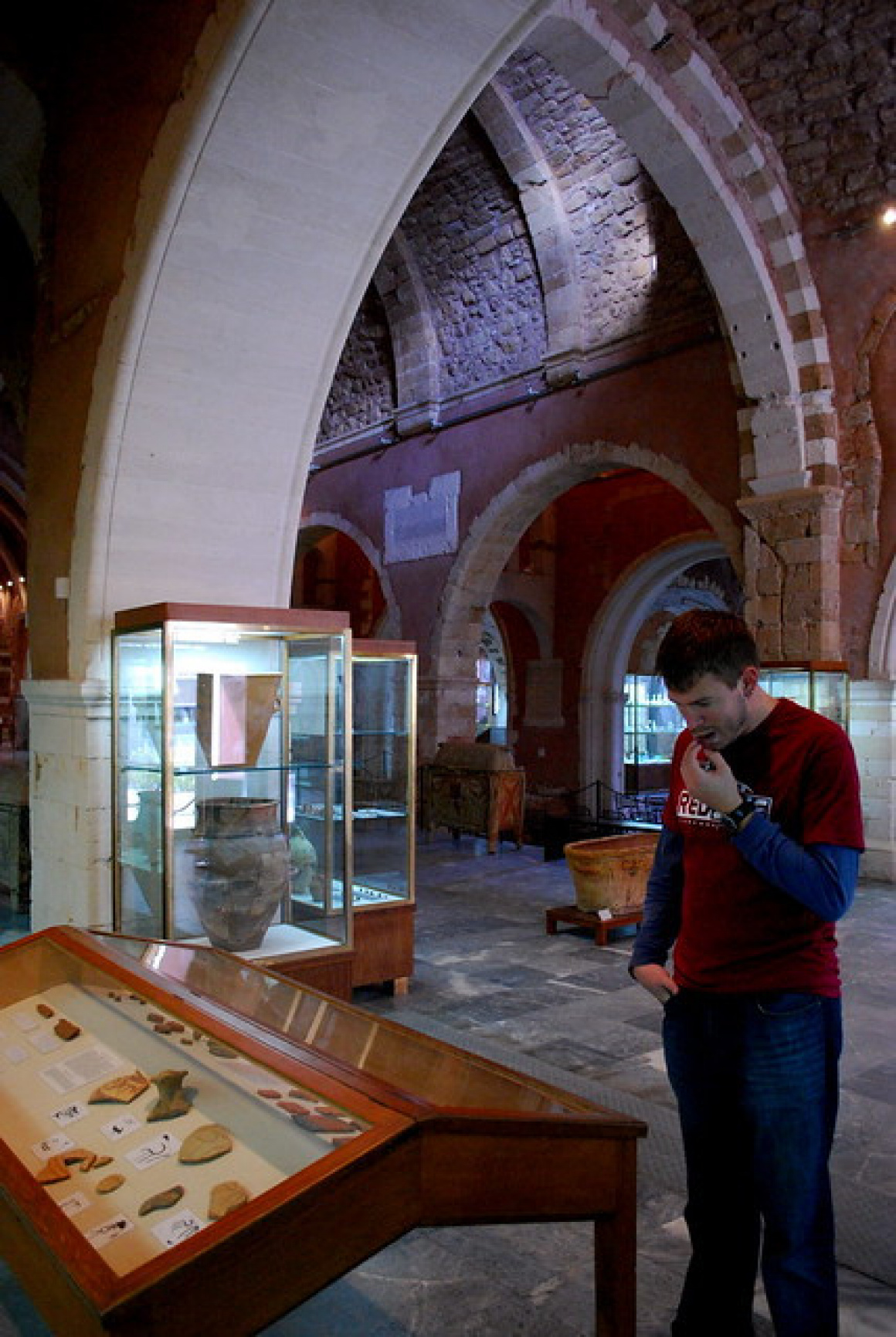
 '2651' - Attribution: Panegyrics of Granovetter
'2651' - Attribution: Panegyrics of GranovetterThe “Master Impression”:
A famous seal impression found in Chania depicts a scene with a commanding male figure on a peak, an iconic image in Minoan art that suggests religious or power iconography.
Pottery:
Lots of it! From elegant Kamares ware cups of the Old Palace period (likely imported from central Crete) to locally made Late Minoan II stirrup jars with linear or floral motifs. One notable group are vessels with Linear B inscriptions on them – rare pieces that might indicate contents or ownership.
The Copper Ingot:
The museum used to display a large copper oxhide ingot – the raw form of metal traded in the Late Bronze Age – found in a shipwreck off Crete. It connects Crete to the wider trade network.
Clay Figurines and Cult Equipment:
Possibly finds from cave sanctuaries in west Crete, such as at Pelekita cave or the peak sanctuary of Malaxa near Chania. Expect to see a line of small terracotta worshipper figurines, altars, and similar items.
Protogeometric burials from Chania:
Amphorae that served as urns with simple geometric designs, accompanied by grave offerings like bronze fibulae (safety-pin like clasps) and weapons.
Sanctuary of Diktynna in Menies (NW Crete):
Finds from the famous temple of goddess Britomartis (Diktynna), such as votive bronze animal figures and inscriptions.
Early Greek Inscriptions:
Possibly the oldest Greek alphabet inscription from Crete (8th c BC) found on a pottery sherd or an offering, like an oinochoe with early Greek letters discovered in west Crete.
Aptera:
Expect gorgeous Hellenistic sculptures – Aptera yielded a statue of a goddess (possibly Demeter or Persephone) and a bust of probably Emperor Hadrian. Aptera's coinage, featuring silver coins with a bee on one side and its own symbols (maybe Apollo) on the other, is also notable.
Polyrrhenia:
Known for its archaic and classical tombs, it might display an impressive limestone statue of a female figure (the “Lady of Polyrrhenia”) or large terracotta sarcophagi. Its water spouts, such as lion head spouts from the aqueduct, could also be on exhibit.
Falassarna:
A maritime power where remnants like parts of an anchor or a relief of a warship’s ram are exhibited. There's even a humorous clay model of a boat found in a child's grave.
Elyros and Yrtakina:
Although not as famous, these sites might feature lovely mosaics or statues – for instance, Elyros had some fine mosaics and sculptures, including one of Artemis.
A highlight likely:
The inscribed stele of the Treaty between Cretan cities and King Magas of Cyrene (3rd c BC) is sometimes exhibited. While a similar Axos stele fragment resides in Heraklion, a dedication to Diktynna by Polyrrhenia might also be on display.
Mosaics:
Possibly part of a Roman mosaic floor from a Chania city house, featuring abstract designs or deities – perhaps from an excavated villa in Kastelli with mosaic floors.
Marble statues:
An intact statue of a Roman noble or deity, such as a Roman copy of the goddess Athena discovered in Aptera's theatre area.
Glass and Jewellery:
Fine Roman glassware, which, after centuries underwater or underground, exhibits brilliant colour and craftsmanship alongside gold earrings and cameos from tombs that reveal the wealth of Roman Crete's aristocracy.
The Hadrianic Aqueduct pipe:
A section of the terracotta pipe or a dedicatory inscription from Aptera's aqueduct built under Hadrian to bring water from the springs.
Byzantine initial:
Early Christian basilica items or a mosaic fragment with a cross that bridges the Roman period to the Byzantine era, possibly from an early church in the Chania region.
The new museum presumably includes digital boards or screens showing site photos, reconstructions, and even excavation footage – for example, a short drone video of the Aptera site or an artistic rendering of the Minoan harbour at sunrise. This integration makes the static objects even more meaningful.
Practical Visit and Linkages
The museum, being new, might not be widely known yet but is well worth seeking out. It is located a couple of kilometres from Chania centre, in Halepa (east side of town), accessible by a quick taxi or even a 30-minute walk from the old port. City buses and the tourist mini-train may also serve the area, and signage appears to be decent. The building is near the Halepa Roman Catholic church, a known landmark.
Plan around 1.5 hours to thoroughly enjoy the museum – though an engaged visitor could easily spend longer with all the new interactive features. If you have visited the smaller Rethymno Archaeological Museum and Heraklion Archaeological Museum, seeing the collections here provides a sense of how each region has its distinct yet interconnected histories. For instance, comparing the Minoan tablets and art in Chania with those in Heraklion or Rethymno can illustrate local variations. Chania's Linear B tablets, for example, list unique terms possibly for western products.
The museum also complements site visits. If you went to an Aptera site with its theatre, cisterns, and fort, you can see statuary and coins there that tie in with the museum's collection. If you drive to the Polyrrhenia ruins above Kissamos, the scant remains on site become more meaningful after viewing tomb finds and a model of its acropolis in the museum. Similarly, many might not have the opportunity to visit Falassarna's scant harbour ruins or the artifacts of Irtakina in the mountains, but the museum allows you to experience these connections through its displays.
Check if the museum still houses the wonderful Mosaic of Dionysos – a floor mosaic discovered under Chania city, intricately tessellated and one of Crete's best. Guided tours may not yet include audio guides, but the bilingual Greek/English labels are comprehensive. The old museum was known for its helpful text, and the new one likely even more so.
On leaving, note that the museum is not far from Villa Ariadne – the historic residence of Prince George during Crete's autonomous period – and the Halepa district, known for its 19th-century consulates. This post-ancient walk offers an interesting contrast after immersing yourself in antiquity. A stroll down to Koum Kapi beach for a drink afterwards perfectly rounds off a day exploring Chania's layered history. When you later admire Chania's Venetian harbour, remember that beneath those layers lies a partly hidden Bronze Age palace – and you've just seen its golden beads and clay tablets up close, bridging 3,500 years in a single afternoon.
Given how new and spacious it is, the Chania Archaeological Museum is now one of the top regional museums in Greece. It is an absolute must for archaeology fans and is strongly recommended for any visitor curious about Crete beyond the typical tourist façade.


